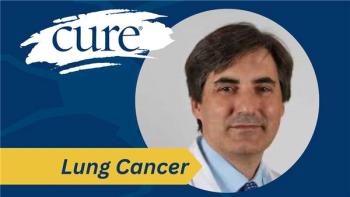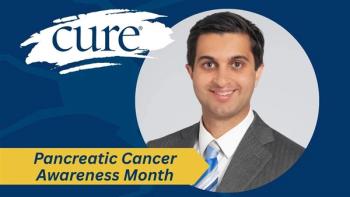
The Present and Future State of a PARP Inhibitor in Ovarian Cancer Care
Charlie Gourley discusses where Lynparza fits in with ovarian cancer care.
Lynparza (olaparib) recently demonstrated improved overall survival (OS) when used as a maintenance therapy for patients with relapsed ovarian cancer. Charlie Gourley, chair and honorary consultant in Medical Oncology at Edinburgh Cancer Research Centre in the United Kingdom said that this agent is extremely exciting.
“The fact is, this drug really works,” said Gourley, an investigator on the phase 2 Study 19 trial of Lynparza versus placebo as a maintenance therapy for patients with relapsed platinum-sensitive serous ovarian cancer.
“The study was designed to look at progression-free survival (PFS), and, unequivocally, it clearly showed that this drug improved PFS,” he added.
A third survival analysis of Study 19, presented at the 2016 American Society of Clinical Oncology (ASCO) Annual Meeting,demonstrated a median PFS of 8.4 months for patients receiving maintenance Lynparza compared with 4.8 months for the control group. The difference in the BRCA mutation subgroup was even more pronounced, with a PFS of 11.2 months with Lynparza and 4.3 months with placebo.
The analysis was performed with a cutoff of Sept. 30, 2015, when the OS data were at 77 percent maturity. At this time, median OS in the entire study population (265 patients) was 29.8 months in the Lynparza group and 27.8 months in the placebo group. In the BRCA mutation group (136 patients), where the data were at 70 percent maturity, median OS was 34.9 months for the Lynparza group and 30.2 months for placebo.
Can you discuss what the significant findings were from this updated analysis?
CURE spoke with Gourley to further explore the role of Lynparza and discuss the impact the updated Study 19 data will have on the therapeutic landscape.This is a study comparing the use of Lynparza after chemotherapy to the use of placebo after chemotherapy. It has been presented several times before at ASCO, but this is an update. The reason why placebo is acceptable is because, as a standard, you don’t give anything after chemotherapy. It has already been shown that the Lynparza improves the time until the cancer gets worse or comes back in patients with ovarian cancer.
We are now really looking at whether that affects survival. Data has suggested that the risk of death was 27 percent less with Lynparza. If patients had a mutation in either the BRCA1 or BRCA2 gene, it seemed that the risk of death was 38 percent less if they received Lynparza. That was quite exciting.
However, the main take-home message for me, as an oncologist, is that there seems to be a group of about 10 percent to 15 percent of patients who remain on the drug well into five years of treatment. For patients with relapsed ovarian cancer, that is really something very new. We call these patients “super responders,” but we don’t really know what exactly makes someone a “super responder.” We are working on that, but that is one of the very exciting things to take away from this study.
What can the medical community take away from these findings?
Another important thing that came out of this study is that now, after several years of follow-up, we know a bit more about the safety of the drug, and it appears that there are no new issues that arrive from giving this drug for five, six or seven years. That is also reassuring. The fact that there is potential improvement in OS really is something to aim for, but the only way to know if your patient should get this drug or not is to sequence them for BRCA1 or BRCA2.
Going forward, what role do you see Lynparza playing in ovarian cancer?
Oncologists really need to be checking the BRCA1 and BRCA2 status of their patients, and then if they have a mutation, they should think about the potential of giving them Lynparza — if they fit the license in that area.The license, in both the United States and Europe, is for patients with BRCA1 and BRCA2 mutations. However, it is pretty clear from the Study 19 data that there are patients who don’t have a BRCA mutation and still benefit. What we have to do is to work out how to pick those patients out, in order to give them a chance of benefiting from this drug.
Is there any potential for the use of Lynparza in an early setting?
Lynparza is also being combined with other agents. People are also looking at the potential of using it without chemotherapy beforehand, and these studies are ongoing. There is nothing anywhere near license at this point, but combinations with anti-angiogenic agents, combinations with immunotherapies, and several other combinations are being investigated.We have seen what looks like an improvement in OS in this study, which was performed in the relapsed setting. The big question is, “When you move it into the first-line setting, and give it to patients who have just been diagnosed, can you improve their outcome?”
People don’t like to use the “cure” word, but we know that some patients are already cured with what we do. From what we’ve seen from Study 19, the big question in my mind is, “Can we cure more patients?” That is a massive question. There are trials addressing it that and I really look forward to seeing that data.





